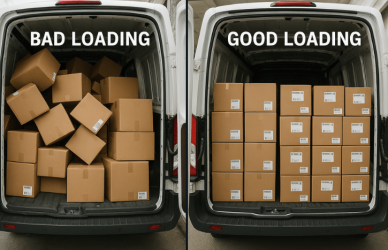The Port of Milwaukee has made a major investment for the future with its new $40 million agricultural maritime export facility. This is the largest cash infusion since 1950 and will facilitate increased international trade thanks to improved multimodal infrastructure capabilities.
“Trucking will be a critical component in the transport of Wisconsin-grown agricultural products from regional farmers, growers and producers to markets around the globe,” said port director Jackie Carter.
In May, operations at the new DeLong Co. Inc. Agricultural Maritime Export Facility will be underway on Jones Island in Milwaukee – marking the largest one-time investment in the city’s port since the 1950s St Lawrence Seaway project. The 3.9 acre site is set to make its mark along the harbor and promises significant economic growth for years to come.
“Port Milwaukee is an integral link in the Wisconsin economy. In this case, we are connecting Wisconsin farmers, growers and producers with new international markets,” Carter said. “The development of this facility at Port Milwaukee is a great addition to the city’s marine commerce, and I’m excited to witness the benefits it will create for our maritime economy.”
Wisconsin is ushering in an exciting new era of maritime trade with the opening of a state-of-the art port facility. Designed to accommodate truck, rail and international vessel traffic, this innovative operation will allow for exports of local agricultural commodities including dried distillers’ grains with solubles – an animal feed supplement – as well as soybeans, corn and grain. With 45,000 metric tons (1.7 million bushels) storage capacity , it’s expected that this development could bring up to $63 million into the economy annually through increased export activity estimated at 400,000 metric tons per year.
In a multi-step revitalization effort, an aged and underutilized industrial site is being transformed into one of the most advanced transload facilities in the region. The process includes demolition of old structures, installation of new mooring infrastructure, and fabrication of state-of-the art gravity dump hoppers for railcars as well as trucks requiring conveying systems to move materials quickly and efficiently between locations.
Funding for the project was secured thanks to the combined efforts and contributions of multiple organizations. The U.S Department of Transportation stepped up with the majority share at $15.89 million in development funds, which was complemented by financial contributions from the State’s Harbor Assistance Program over three successive years; amounting to a total of over $9.5 million – including last year’s grant payment of $3.38 million, 2021’s donation worth $1.25 million and, possibly most significantly, 2020‘s allocation of $4.9 million.
“The combined support from local, state and federal officials affirms the importance of this new asset on Jones Island,” Carter noted.
Additionally, Port Milwaukee kicked in $5.7 million as did the DeLong Co. Inc. with $8.88 million, plus being honored by lending its name to the new facility.
“We want to thank the city of Milwaukee for their partnership on this project. We look forward to becoming part of the community,” said Bo DeLong, grain vice president at DeLong Co.
Wisconsin is expected to experience significant freight movement growth in the next two decades, with an estimated tonnage increase of 74% over all transportation modes valued at almost $1.5 trillion dollars. However, WisDOT has identified that waterways around the state are underutilized due to lack of intermodal connections and traditional commodities transported – a factor they hope to address in their upcoming 2022 Freight Plan update.
Source: Transport Topics








